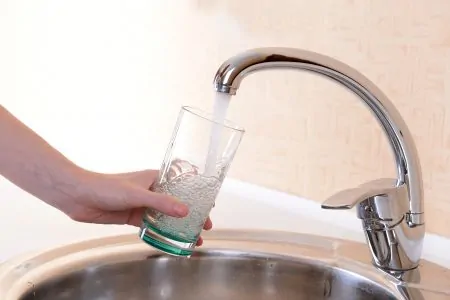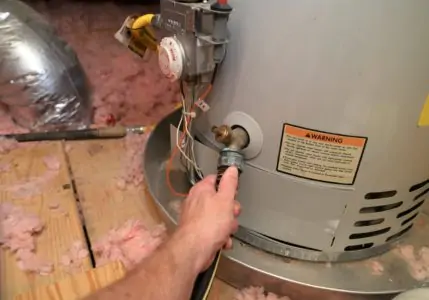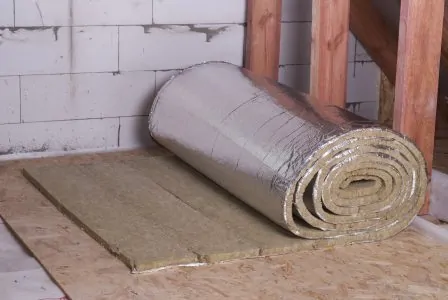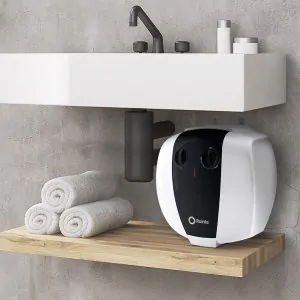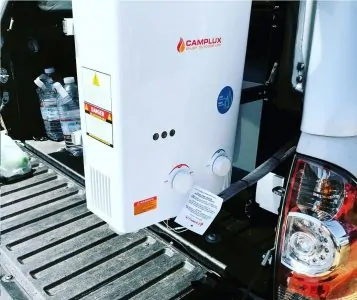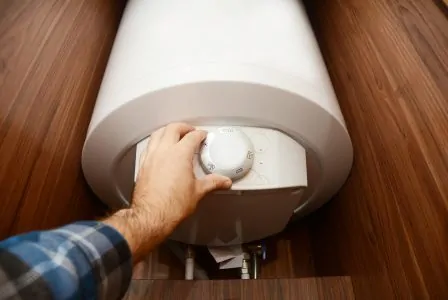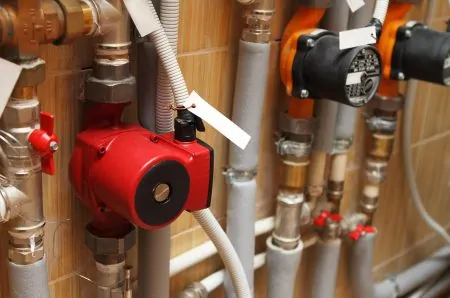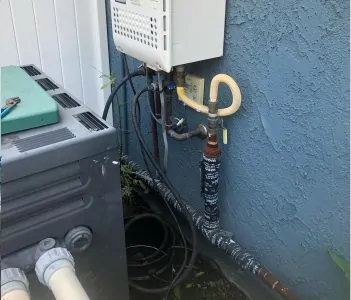Have you noticed that your taps sputter when you use them? This issue might have only started recently, or it could have affected you since you moved into your home.
A sputtering faucet is most commonly caused by air in your hot water line. In the majority of cases, this is nothing to worry about, but hot water sputters are annoying and something that is worth taking the time to fix.
In this article, we will take a closer look at why there might be air coming out of your hot water faucet and the simple methods to get rid of it.
Key Takeaways
- Air in water pipes can cause sputtering faucets and irregular flow.
- Most common cause is air in the hot water line due to air pockets in the water heater.
- To get rid of air, open all taps in your house or purge air from the tank.
- If the problem persists, consider inspecting your plumbing system or calling a professional.
The Signs
If there is air in your water line, it should be easy to recognize — your faucets will tell you! Here are a few reliable, telltale signs of air in water pipes, which you should keep an eye (or ear) out for:
- Sputtering: When using your taps or other outlets, the stream spits and sputters seemingly at random.
- Irregular flow: Air pockets can cause the volume of water to increase or decrease when the faucet is open. There might even be a delay in the water reaching the outlet and you could hear a gurgling sound before it does so.
- Vibrating pipes: Pipes could vibrate at lower pressures.
What Causes Air in the Water Line?
The origin of the issue can vary depending on the type of water system in your home. It is also possible that air could be trapped in both the hot and cold water lines, in which case you might need different treatments.
Air in the Hot Water Line
If you have checked your cold water feed and everything seems to be working smoothly, the issue is usually with air in your water heater itself.
The process of heating water inside a tank sometimes creates air pockets. These can be large or small but they usually disappear when the water is forced out. The air is usually found at the top of the tank or at high points within your water system.
However, sometimes the air follows the flow. If this is the case, you might notice a few sputters at the faucet before the hot water becomes a steady flow.
How to Get Rid of Air in the Hot Water Line
The easiest method is to simply open all the taps in your house until the air dissipates. However, purging or bleeding your tank could give you better results. You should perform this maintenance task annually anyway — or twice a year if you have a water well system.
You need to make sure you purge the air correctly — you don’t want to create an opportunity for even more to enter. Here’s how to do it:
1. Shut the Power Off
It’s important to first turn off the power source for the water heater. Refer to your heater’s handbook for specific instructions.
2. Let it Cool
Leave the cold water feed open to allow the tank to fill. During this step, avoid opening any taps in the house. Opening taps will cause more air to enter the system as you drain it.
Take A Break
3. Locate the Drain Tap
The drain tap is usually located at the bottom of the unit. We suggest laying some plastic or tarp beneath it to prevent any water damage to your floor. Next, attach a hose to the line and run it into an outside drain.
Take Note
4. Open the Drain Tap
When you open the drain tap, cold water will continue to enter the tank — remember, the feed is still open. This will force the air and any sediment out of the tank, so you will not only get rid of the air but also any troublesome build-ups.
If you want to check your tank for sediment, place the hose into a bucket (outside) and fill it halfway. Let it sit for a while — the sediment should be visible at the bottom.
Repeat this process until the water runs clear, or you don’t see any sediment in the bucket. The tank should now be drained and flushed through.
5. Fill the Tank
Once the tank is drained, it’s time to refill it. First, you need to close the drain valve to make sure the water stays inside the tank. Wait until the tank is full, then turn the power back on.
Other Types of Systems
It’s also common to find air in the cold water lines. How it gets there and the severity of the problem will depend on your plumbing system. Other than your water heater, here are some alternatives that could lead to air in both hot and cold lines.
Well-Fed System
With a well-water system, there are three common causes of air in the line.
1. Check Valve
The check valve can be a common problem in well-fed systems and one of the most important issues to look out for. You can usually find this situated near the pump.
One reason is that it might have become loose and is now sucking in air from the outside. If, after inspection, you confirm that this is the case, a simple hand-tighten could suffice.
Safety First
If a faulty check valve isn’t spotted and addressed, it could cause a serious problem. When drawing in air, it could also allow contaminants to enter your system. These might be harmful to you and your family’s health (1).
Don’t Put It Off
2. Water Level
In a well-fed system, the air is sometimes caused by low water levels — possibly due to overuse or drought.
Luckily, there’s an easy fix for this problem. You can add a few extra feet of length to the pipe that runs from the pump to the water. It’s best to call in a trained professional to help you.
3. Methane Gas
Methane is a natural gas and can be found in some areas using well-fed water systems. It depletes oxygen and in high concentrations can be flammable. Methane gas can also dissolve in water.
As the water is pumped to the surface, the temperature rises and pressure drops. This causes the methane to leak into the water — similar to how bubbles erupt when you open a can of soda (2).
The most common way to get rid of methane in your well-water is through aeration. Aeration mixes air into the water, which then vents the gas out.
Safety First
Gravity-Fed Systems
Air in a gravity-fed system is usually caused by the water being shut off during maintenance. The air can become trapped when the water is turned back on. You can easily fix this by running your faucets until the water flow becomes regular again.
FAQs
In Summary
Trapped air in your hot water system can be frustrating. If you suspect that your water heater is the issue, look for the signs such as sputtering only coming from the hot faucet. However, if the cold feed also shows signs, the problem is likely with your whole system.
Turning on all your faucets can help remove air pockets. If the issue is with your tank, we recommend purging the air from the system. If you followed this guide, you now know how to get air out of water lines and you can enjoy a smooth flow and quiet taps again.
